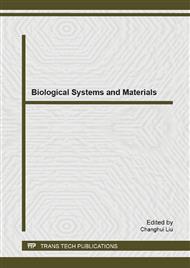p.3
p.8
p.14
p.20
p.26
p.33
p.38
p.47
Development and Validation of a Finite Element Model of Human Cervical Spine Based on the Head-Neck Drop Test
Abstract:
A finite element model with detailed anatomical structure of human cervical spine was established in this paper based on the CT scan data of the cervical vertebrae obtained from a 50th percentile Chinese male. The model was validated by the data from the head-neck drop test conducted by Nightingale et al in 1996. In the drop test simulation, the contact force between the head and impact surface, as well as head acceleration were chosen to gauge the accuracy of the model predictions against test results. The results show that the head - neck finite element model without muscle tissue has a consistent mechanics and dynamics with the body drop test. The model can be applied to the exploration of a more detailed neck injury model with muscle tissue and can also be directly applied to the study of injury mechanism of the cervical spine in the car crash accidents.
Info:
Periodical:
Pages:
14-19
Citation:
Online since:
May 2014
Authors:
Keywords:
Price:
Сopyright:
© 2014 Trans Tech Publications Ltd. All Rights Reserved
Share:
Citation:


